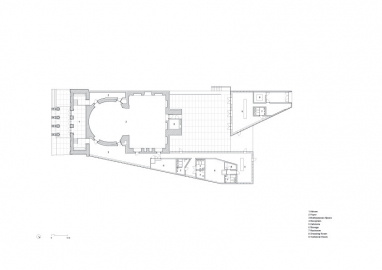Reconversion of Thalia Theater, Lisbon
A mash-up of the Neues Museum, a Peter Brook performance and a Rachel Whiteread sculpture, the project combines the old parts of a building the remains of a nineteenth century theater and new parts such as a cafeteria into a multipurpose facility with views to the nearby Zoo.
Originally located in the outskirts of Lisbon, Thalia Theatre opened in the 1840s. A venue of leisure for a local aristocrat, it burned down shortly after and remained derelict since then. The project reconverted its ruins into a multipurpose arena for conferences, exhibitions or concerts. To retain the old walls, the exterior was encased with terracotta concrete. The interior remained as it was, like a fossil. An adjacent single-story pavilion, entirely glazed with gilded glass, faces the street nearby. The project combines the old and new parts of the building into an urban ensemble with views to the nearby Zoo.
The Thalia Theatre was inaugurated in 1843 as a private venue for the Count of Farrobo. It was located just outside of Lisbon, facing a palace and gardens also owned by this aristocrat. In 1862, a fire destroyed the building with all its luxurious decoration of gilded wood, mirrors and chandeliers. For almost 150 years, the theatre remained in ruins with the outskirts of Lisbon sprawling around it. The city zoo was located next-door providing an exotic background to the derelict structure.
In order to retain the old walls of the theatre, the exterior was entirely covered by a shell of terracotta concrete that forms a massive and monolithic body. It is composed of the original volumes of the audience and the 23-metres-high stage. Inside these two voids, the ruins have been left untouched creating a spectacle of their own. Minimum technical fixtures create an arena that can be adjusted to diverse uses such as exhibitions, conferences or broadcasts. An adjacent single-story structure, entirely glazed, houses additional parts of the programme such as the reception, services and a cafeteria.
Bronze letters at the tympanum of the main facade spell out the motto of Thalia, the muse of comedy. The original Latin inscription, Hic Mores Hominum Castigantur, was placed once again. In other words, Here the Deeds of Men Shall Be Punished. The project for the reconversion of the theatre combines the old and new parts of the building into an urban ensemble with views to the nearby zoo. It brings back the presence of the past as a place for fantasy, imagination, and civic life.
The design pursued energy efficiency through a combination of different features. The indoor climate control system is integrated in a ventilated double floor slab with high thermal mass. There are no ducts in the ceiling, only a high level side natural exhaust for the displacement ventilation system. The floor also integrates a radiant slab that provides base heating and cooling. The high energy efficiency is reflected in the A class EPBD building energy rating achieved by the building.

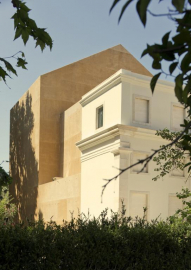
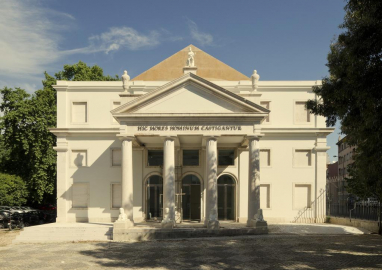
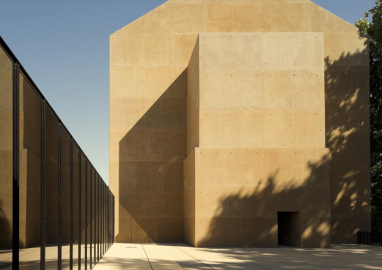
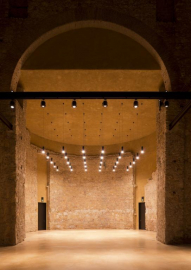
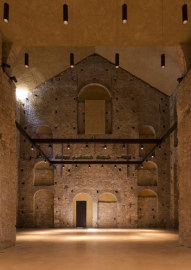
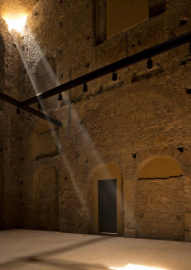
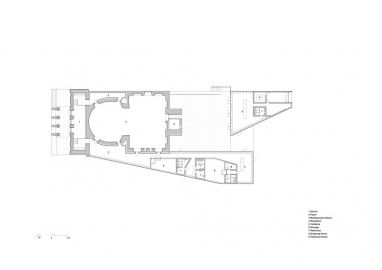
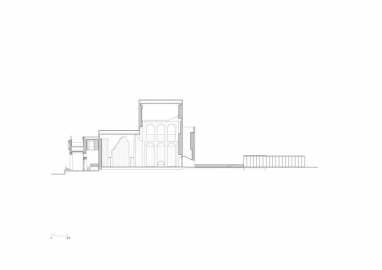
 copy.jpg)
